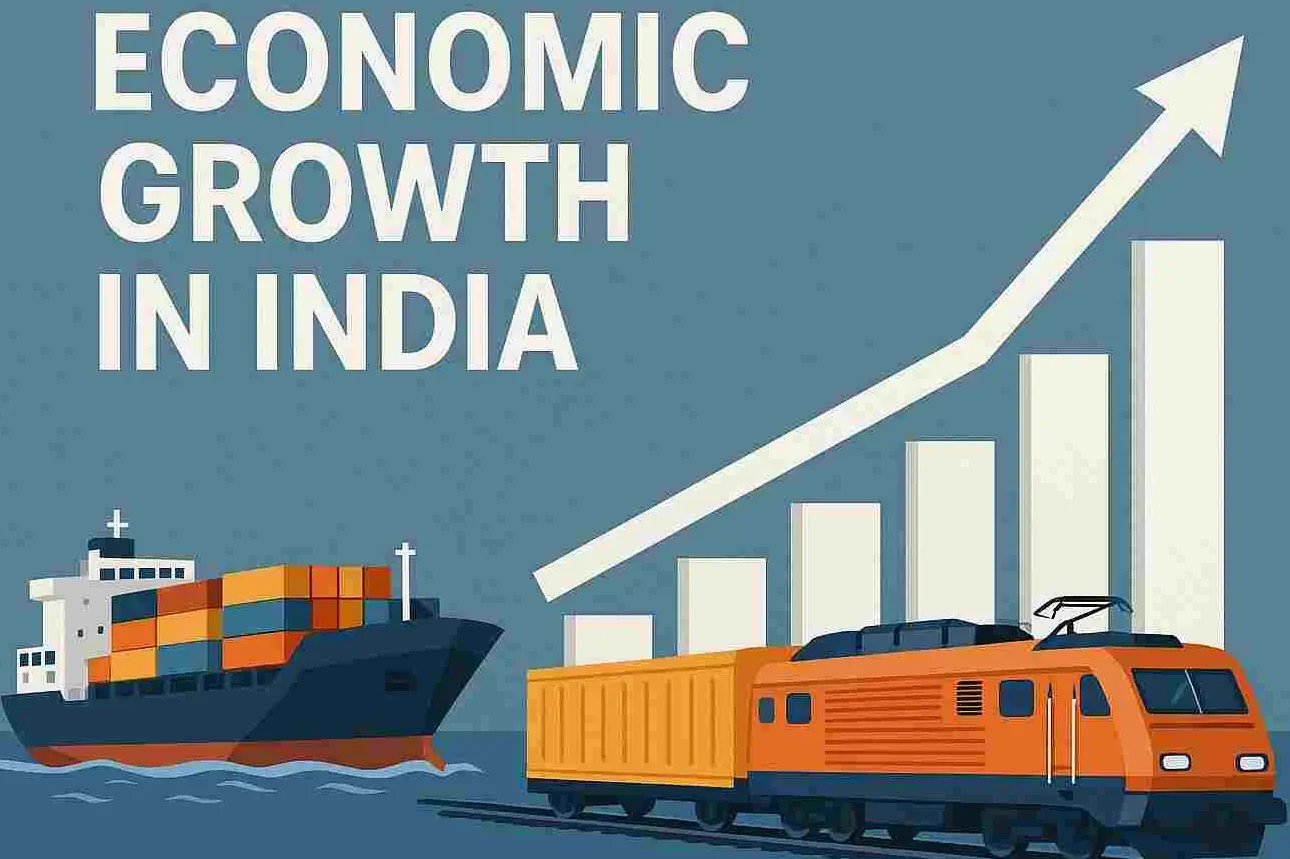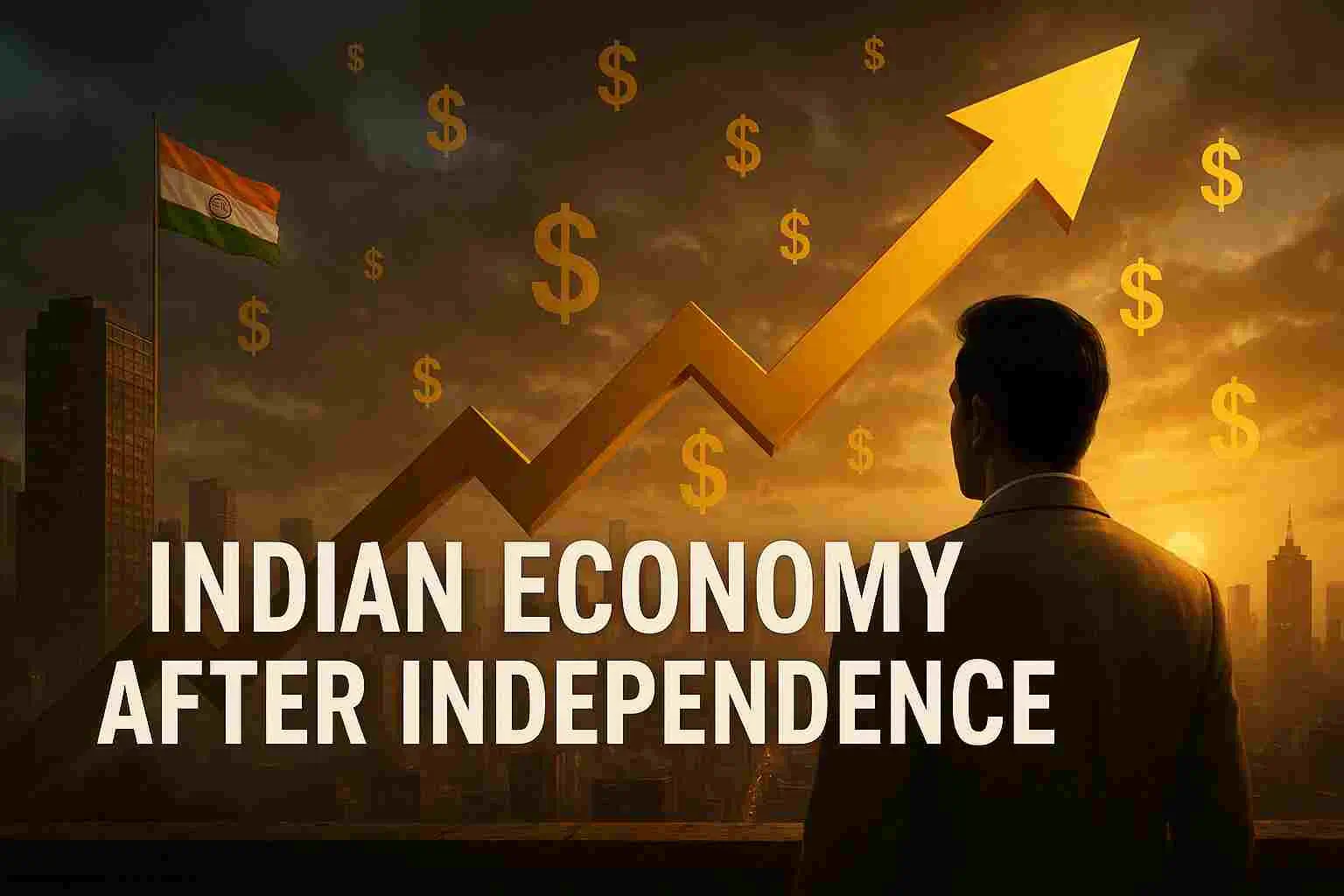The Indian economy after independence was among the poorest in the world; however, most of you are aware that our country is now the 4th largest in the world, with some expecting it to become the third largest one by the end of 2025 itself. Ours is the fastest-growing economy, and if you consider the Indian economy in terms of purchasing power parity (PPP), our economic value in those terms would be slightly more than $15 trillion.
When India gained its independence in 1947, most of our people in India still lived in rural areas, and even without any basic amenities, as you would have read in books. So, when the British left India, there was nothing to loathe about it except for the plight that our great-grandparents had to endure and sustain. And there was a significant portion of the population at that time that consisted of farmers onley.
However, in 2025, the world is now familiar with Indians as technologists, computer scientists, medical professionals, space scientists, engineers, IT professionals, and so on. Some say that the 21st century belongs to Indians.
Key Takeaways
Here are the major points that you are going to learn before we start the course of our journey into our subject of discussion:
Agricultural Focus to Industrial Growth: Agriculture was the primary sector in the past, and when it gained independence, but today India is growing into factories and IT firms.
Government Planning: Five-year plans, playing a crucial role at that time, were essential for carefully organizing economic development.
Trade Revolution: Export activities have significantly improved over time as a result of the careful shift from closed borders to global trade partnerships.
Modern Service Economy: India has become a major player in the world in the IT sector (the World knows India by this domain) and digital services.
What Made the Indian Economy Post Independence Grow So Fast?
By the turn of the 19th century, or to put it another way, in the early part of the 19th century, most countries around the world were mostly poor or the poorest, except for some parts of Europe, North America, Russia, and Japan. And our India was one of the poorest countries in the world when it gained independence.
When it comes to economic terms, India began its journey from a complicated situation and faced significant challenges.
People had little to hardly any money with them. There were only a few factories; most people were illiterate or could not read and write even in the local script or language. However, our government had begun addressing all of these issues, among others, to gradually eliminate and improve those problems structurally. This was our focus, and the Indian economy, since independence, had always been the goal of eliminating problems systematically.
Our leaders at that time, when our parliamentary (union) government was formed, decided to pick a mixed economy rather than a purely capitalist or socialist one. In this kind of mixed economy, what you will see is that both government and private companies (enterprises) continue to operate together simultaneously.
The decision was a wise choice by our leaders and the people of India, and from there, it all began for India’s shine and rise. Our growth took off without relying heavily on other countries, and the pillars of our self-reliance were established.
Key Milestones (1947-2024)
| Year | Major Achievement | Impact |
| 1951 | First Five-Year Plan | Focused on agriculture |
| 1991 | Economic Liberalization | Opened doors to global trade |
| 2000 | IT Boom Begins | Made India a global tech hub |
| 2014 | Digital India Launch | Boosted online services |
Best Strategies That Shaped Growth of Indian Economy Since Independence
To strengthen and make our economy more resilient, our governments implemented several effective strategies, including ensuring food availability for all, creating jobs, establishing steel mills, and enhancing infrastructure with roadways, highways, railways, and airports. They established numerous power plants, hydroelectric powerhouses, and power grids.
The growth of the Indian economy since independence required getting an education, which was also crucial. The government established schools, colleges, and technical institutes across the country, which helped train young people to run modern and advanced companies and businesses that laid the groundwork for smooth growth in several sectors.
- The Indian economy after independence underwent a swift transformation, with Heavy industries such as coal and steel mining being among the first to take off.
- With the advent of the Green Revolution, farming experienced increased productivity through the use of improved seeds.
- The banking system expanded and spread across the territories, enabling people to save and borrow money.
- Export promotion became a primary focus, which helped Indian goods get to markets around the world.
It was in 1991 that drastic and tremendous change took place—a turning point in Indian economic history. With the introduction of economic liberalization in 1991, foreign companies started making their presence felt in India as the Indian government loosened its tight grip on the market.
Due to this, Indian companies also benefit significantly when competition begins to intensify in India. It is because with liberalization, new technologies started pouring into the Indian market, which led to the creation of many jobs. A new competition emerged in the Indian market—a huge positive sign.
Leading Sectors Driving the Indian Economy Since Independence
At various times and over time, different sectors have experienced distinct growth and development from different perspectives. Initially, people worked primarily on farmland, but then manufacturing industries expanded, employing millions of people in textile mills, car and vehicle factories, and chemical firms, as well as in nascent pharmaceutical companies.
The year 2000 marked another pivotal moment for India, as the service sector emerged as its greatest asset. As you can see now, most of our wealth comes from the banking, healthcare, education, and information technology sectors.
Sector-wise GDP Contribution (2023)
- Services: 55% of the total economy
- Industry: 28% of the total economy
- Agriculture: 17% of the total economy
- Others: Small yet crucial contributions from mining and utilities
Why Did Economic Reforms Transform India’s Future?

With the arrival of the year 1991, India took a great leap by introducing liberalization and handled its economy more prudently and efficiently. So, the Indian economy post independence took a drastic turn in 1991 for a huge positive impact on the improvement of people’s lives.
Private companies now have more space to make decisions and start their businesses. Now, foreign companies can merge with or buy Indian ones as well—foreign direct investment. After 1991, Indian goods and products became cheaper and more durable as well. This phenomenon was a result of competition.
Indians experienced tremendous positive results from the above strategies and changes: people began making more money, jobs were available in abundance, and new technologies started appearing in India. As a result, people began migrating to cities, leading to a reduced dependence on agriculture.
Conclusion
Due to sound and intelligent policy and planning, India has achieved remarkable progress and development, thanks to its education system and the changes implemented carefully and efficiently. Now, India is the fourth-largest economy in the world, very close to Germany, and is expected to surpass the latter shortly to become the third-largest economy, with some anticipating that this could happen as early as 2025 itself.
As you can see, India has evolved from a developing country or rather the poor to a global leader in services and technology, particularly in the space exploration (ISRO), military, and IT sectors. And these achievents illustrate how laborious and industrious Indians are, and how the Indian economy after independence has transformed tremendously and rapidly—the figure prove all these.
Frequently Asked Questions
How big was India’s economy when it became independent?
As an independent nation in 1947, India’s GDP was only around $20 billion (in terms of US dollars and ₹2.7 lakh crore in INR). India was primarily an agricultural economy, so there was a lack of factories, companies, and modern business entities, as opposed to the current scenarios that we see nowadays.
What were the main challenges faced by indian economy after independence?
The most critical problems included poverty, a lack of industries with employment-oriented capacity, poor education, and limited or no infrastructure for our citizens. The majority of our population was illiterate, and there was limited infrastructure for our people, including roads, railways, and power supply plants or grids.
When did India start growing fast economically?
After the introduction of economic changes or liberalization in 1991, India’s economy took a major leap toward rapid growth, improving all of our economic and financial sectors. Before that era in India, our economic growth was very sluggish, with a rate that ranged only between 3–4% per year; this period was termed the “Hindu rate of growth” by our famous economist Raj Krishna.
Which sector contributes most to India’s economy today?
Our service sector contributes a significant portion of our economy, accounting for around 55% of India’s GDP, in fact. As for the service sector, it comprises various activities and things, like banking, healthcare, education, phone services, IT services, and many more. These service sectors not only serve our Indian people but also the world outside India.
How does India’s current economy compare globally?
As most of you know, India at present ranks as the fourth-largest economy in the world, and some of our analysts expect it to surpass Germany and would surely become the third-largest by the end of this year, 2025, which will certainly come into reality given the fact that our Indian workforce is advancing in every sectors from AI to defence. In terms of Purchasing Power Parity (PPP), India ranks third, with an estimated $16 trillion (in US dollar terms).
Postscript
Whatever changes happened after India’s independence due to the government’s policy and planning still inspire and motivate other countries, and the world outside India is trying to emulate us. Over time, as various Indian governments have implemented planning and policies, new programs such as Digital India, Made in India, Startup India, and others have provided young minds with opportunities to progress and advance.
Currently, India’s economic policies give more priority on our sustainable growth and long-lasting advancement while ensuring environmental protection so that we may live a healthy life and equitable development that benefits everyone, you and me as a whole, in India. The Indian economy after independence has made significant progress for our cause that you can yourself witness, and achieving the goal of becoming a developed nation by 2047 is easily possible if all our parliamentarians, regardless of their political affiliations or parties, share this aspiration.

